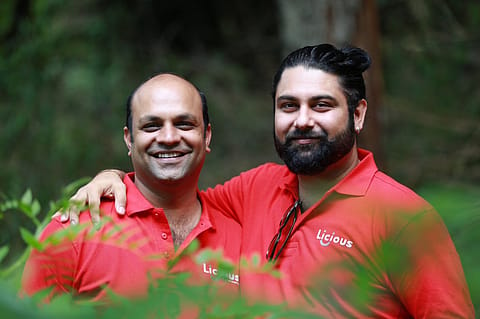Licious wants you to eat more meat
“In India, meat has generally been a pure lunch or dinner kind of a play. We do not consume meat during the day. We aim to change this,” say co-founders Abhay Hanjura and Vivek Gupta.

The start-up culture is typically associated with speed and agility and rightly so. Most often, companies are in a rush to grow their businesses, be it in terms of expanding their geographical footprints or broadening the omnichannel play. And with the kind of sizeable cheques that investors continue to sign for scores of Indian start-ups, the expedited business plans perhaps seem doable. New unicorn Licious, however, has a different game plan: it wants you to eat more meat. The firm is crafting a sharp ready-to-cook and ready-to-eat product strategy to get users to consume more portions of meat during the day. Licious’ ready-to-cook and ready-to-eat segments primarily offer a curated choice of quick meat and fish-based snacks — comprising a range of kebabs, fries, and items like chicken salami— that adds to the taste of one’s light evening meal.
“In India, meat has generally been a pure lunch or dinner kind of a play. We do not have more moments of meat consumption during the day. Breakfast is empty, snacking is very empty. Only potato-based items like samosa, bonda and patties are served as snacks. We aspire to change this. How do we appropriate meat in more meal moments during the day,” Co-founders Abhay Hanjura and Vivek Gupta tell Fortune India.
The company is experimenting with new flavours, selection of products, and plans to introduce a host of fresh, innovative items to the ready-to-cook and ready-to-eat product slate. The segments currently contribute about 20% to the overall business. Launching regional cuisine is also on the menu. “Food choices change every few 100 kilometres. So, appropriating Licious to every such regional ethnicity is one of the key tasks at hand,” Gupta says.
Earlier this month, IIFL AMC’s late-stage tech fund led a $52 million funding in Licious — valuing the Bengaluru-based direct-to-consumer (D2C) start-up at $1 billion and propelling it to the elite unicorn club. Coveted investor Temasek placed its bet on the company by leading a $192 million investment round in the start-up, alongside Multiples Private Equity in July. The healthy investor appetite for Licious is not very difficult to understand given the firm’s scorching pace of growth. Hanjura claims that the “size of the brand in terms of revenue is close to five times of what it used to be pre-pandemic.” The start-up is simply not being able to keep up with the heavy demand from consumers in Kolkata, the city of fish and meat-loving Bengalis, says Hanjura with a smile.
Licious started delivering in seven new locations last year, which includes a good mix of big, tier one and Tier-II cities. The response from Tier-II towns like Coimbatore and Vizag has been encouraging. It, however, is in no hurry to chalk out an aggressive expansion plan. Tier-III regions, for instance, are not on the radar for now. The start-up, though, aims to launch services in more than 20 cities in the next year or so, taking its total count to about 50. “There is enough juice and opportunity in Tier-I and II cities. With UPI penetration and given how the digital landscape has shifted, Tier-II cities are online as much as their metro and tTier-I counterparts,” avers Hanjura.
There can be no better time for companies to tap into this growing consumer affinity for online-first brands and develop strategies to deepen the customer connect. Licious is no exception. The firm is gearing up to launch branded experiential meat-shopping centres in Bengaluru and New Delhi. The idea is not to generate considerable sales from these offline stores but to engage with customers better. “We are not thinking of offline as a very big revenue driver as of now. Also, we will double down on exclusive brand outlets after having our first set of consumer learning. We do not necessarily believe it is wise to set ourselves on a 100-store ambition without figuring out what the scale-up playbook will look like,” says Gupta.
Net profitability for the firm may be some good 18 months away. Given that the penetration of the online D2C meat segment is in the low single digits, there is enough room for the brand to grow and Licious wants to capitalise on the market opportunity. The start-up that claims to be adding 100,000 new users a month is lining up big investments to ramp up its infrastructure. “It is too early for us to compromise as a brand. Organisations should be worried if operationally they do not make money. But since we are past that stage, the question of profitability is really in our hands,” say Licious' Hanjura and Gupta.